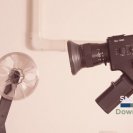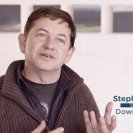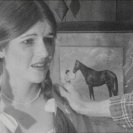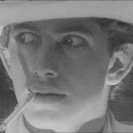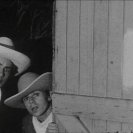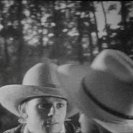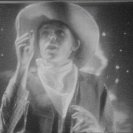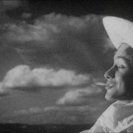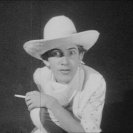Artist statement, Stephen Fearnley September 2013
"Its 1982, Steve Harrop and I are finishing Fine Art at Alexander Mackie ( now COFA) and we have a major work to get done for finals...
I don’t quite remember how Steve and I first met. I already had respect for his short films and so when he suggested we collaborate, I was the lucky one! It was Steve’s idea to add-pictures to pre-existing sound- such as an old radio play. We are both sound-heads. It seemed a perfectly sensible way to make a film at the time.
Steve Harrop says:
We liked the idea of adding pictures to a radio play as the original intention of the radio play was to embellish a vision for listeners with an over exaggerated descriptive dialogue. Our pictures would make this more surreal because of the dialogue.
Both Steve and I find it easy to visualise, to extrapolate pictures. We both have a corny sense of humour. We both get similar sequences and conceits when contriving narratives. A bit like one mind -two brains. Always fun working this way.
When we cooked up Down Diablo Way - the dark-weirdo-western-musical based on the William Boyd radio play, we only had Super 8 film, rear projections and simple key lighting for the actors. But we got to wear cool western hats , rolling the camera and miming to our re-worked radio play sound bed. Of course there was a minefield of technical issues as Steve Harrop explains:
Using single system sound in super eight, if you splice 2 scenes together, the sound part of that edit will happen 18 frames later then the visual part due to the technical limits of film in a projector. As film passes through a projector (any projector) a loop is formed in order to flip and hold frames in the gate to give the viewer the impression of 18 frames animating to form a moving image. A magnetic sound track needs to be smoothly moved past a sound head in order register a signal, therefore these two different functions have to operate at different times with a loose loop between them, thus the delay.
Our lecturers had told us this limitation would mean that we would need a one second buffer between every edit otherwise we would get audio anomalies with every edit. This rule was told to all filmmakers working with sync sound in super eight at college. This lead to some very "staid" looking films. Our theory was that if we had an already existing soundtrack and re-sync every take, when editing these takes together, there would always be a point where this soundtrack would eventually be smooth at that point there would be an 18 frame range where we could choose our edit.
I got to play the psychotic Hoppy. Steve Harrop the faithful Lucky and of course the awesome Sis, Lucky’s sister, was played by photographic artist Shayne Higson. There’s a haunted goldmine and a couple of songs and a gunfight. I believe Steve shot the great opening sequence with the camera strapped to a golf buggy running along a dirt road. He was also the maestro who worked out how to rewind a super 8 cartridge for double exposure - thus the titles were made – in Steve Harrop’s words:
Added to rear projection, the titles are all re-filmed in order to get two images on the screen at once. This was done by breaking the film cartridge open and rewinding the film and planning the timing of the effects by using a hacked pocket calculator attached to the camera
Its now 2013 and Down Diablo Way has had it’s own life for thirty odd years. Somewhere , out there on the lonesome ranges, are a couple of post-modern cowboys singin’ to imaginary cows and riding non-existent horses."








